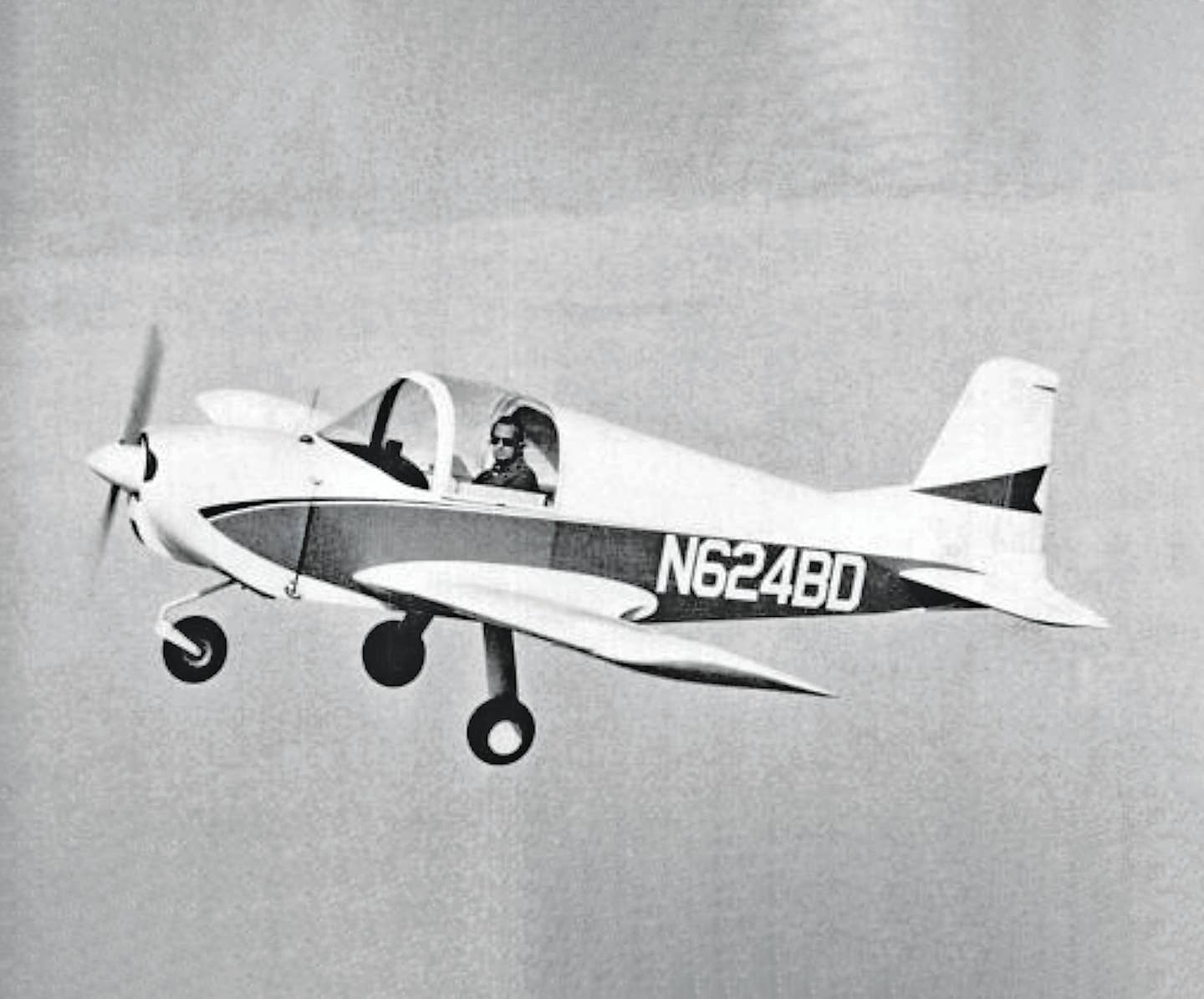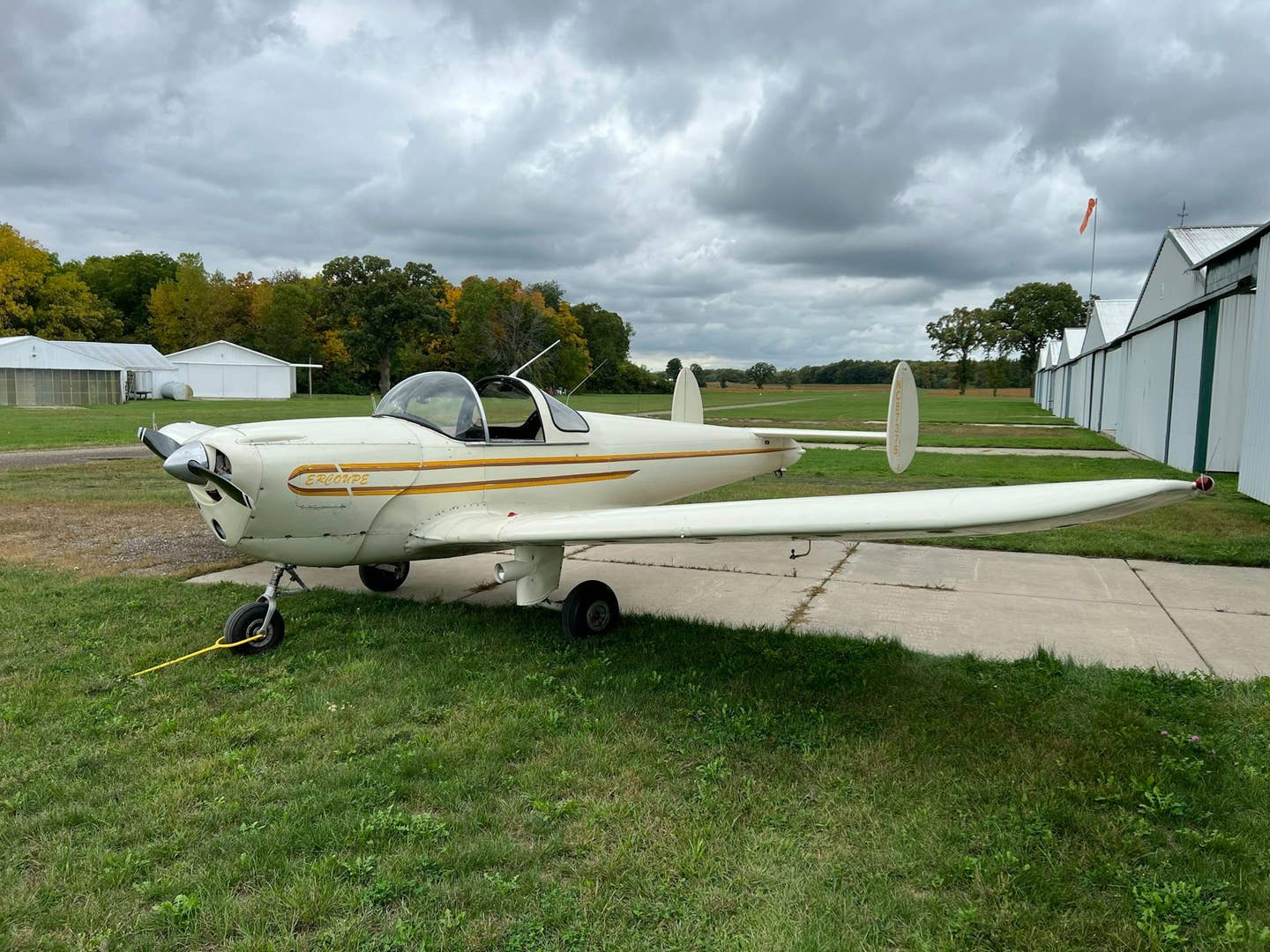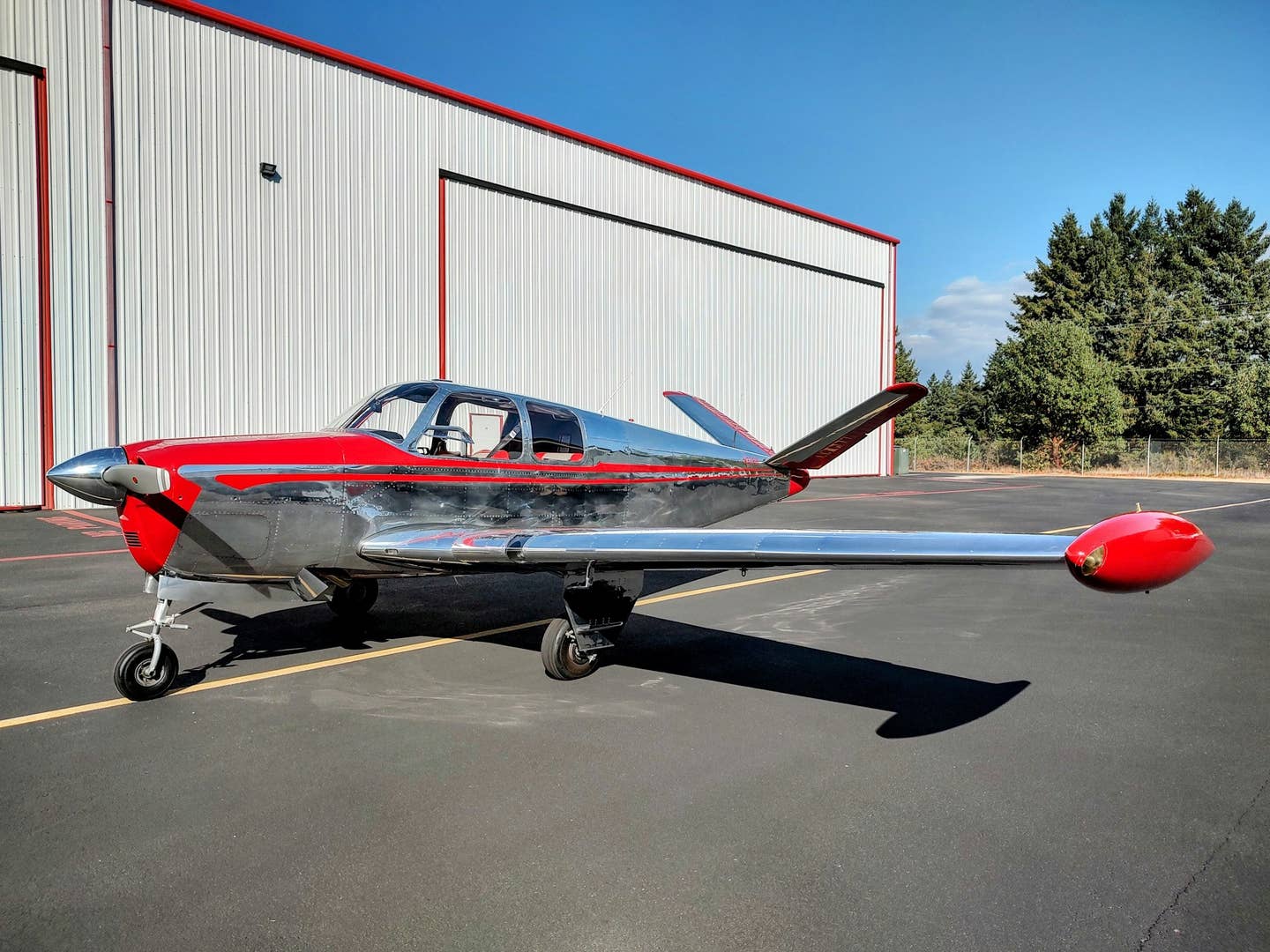The Bede BD-1
Mention the late Jim Bede to some, and images of the sleek little BD-5J Microjet, flown through a hangar by none other than iconic movie spy James Bond, come to…

Bede BD-1 [FLYING Media file photo Feb 1964]
Mention the late Jim Bede to some, and images of the sleek little BD-5J Microjet, flown through a hangar by none other than iconic movie spy James Bond, come to mind. To others, the picture is of an incredibly visionary aircraft designer who unfortunately left more than a few dissatisfied customers in his wake.
Over his lifetime until his death in 2015, Bede produced many efficient and capable general aviation aircraft designs. However, long before the BD-4, BD-5, BD-6, and eventually the BD-10 jet project, his very first design, the Bede BD-1, must be considered his most successful. This petite little two-seat trainer and personal travel machine led to an entire line of fast, efficient, and fun production aircraft.
Fresh out of college in Kansas, Bede began his career in the late 1950s at North American Aviation as a performance engineer. While he remained at NAA for a relatively brief stint, this was a time of great innovation in military aviation design. His later use of honeycomb materials and other advanced design features likely began there.
Returning to his hometown of Cleveland in 1961, he created Bede Aviation Corp. His goal was to design and market a sporty two-seat homebuilt airplane that would outperform the Cessna 150, utilize modern design concepts, and could be towed to and from the airport. The result was the BD-1, a two-seat, low-wing monoplane that utilized revolutionary, for the time, aluminum honeycomb; bonded rather than riveted construction; and interchangeable control surfaces. The left and right wings, stabilizers, and elevators were identical. The simple landing gear incorporated a full swiveling nose gear, which 30 years later became the standard for new designs, such as those for Cirrus and Diamond.
For the wing, he chose a tubular spar that contained the fuel and incorporated a folding mechanism that allowed for highway travel. This fuel in the spar design carried through to all of the Yankees, Cheetahs, and Tigers produced by Grumman American and others. Its main structural member is a 6.5-inch cylindrical aluminum spar, which doubles as a 12-gallon fuel tank to provide a total of 24 gallons.
Certainly the most identifiable feature was the sliding canopy. Similar to the jet fighters he had worked on at NAA, the canopy simplified entry and exit, doing away with the heavy door structure and giving the pilot great visibility. Oh, yes, flying with the canopy open has always been cool. The entire kit, including the engine, was set to go on sale for just $2,500. All of this was heady stuff for the early 1960s.
The BD-1 first flew on July 11, 1963, and met or exceeded all design specifications. The prototype featured a 117-knot cruise speed, a VNE of more than 200 knots, and an initial climb rate in excess of 1,000 feet per minute. Initially designed as a kit, Bede was so pleased with the prospects for marketing his new design that he decided to go the Part 23 certification route for the BD-1.
Soon after, Bede Aviation became American Aviation Corp., the BD-1 would become the American Yankee, and a group of Cleveland businessmen came on board as investors. However, homebuilt kit design and certification of a Part 23 aircraft are two different challenges. Eventually, Bede and his new board disagreed on how to achieve these goals, and he departed the company in a foreshadowing of business issues that would follow him through his career. American Aviation, managed by the Cleveland business group, commissioned a modest redesign of the aircraft to make it easier to certify, and the AA-1 American Yankee debuted in 1968.
The Yankee became an immediate hit. With a price tag just less than $7,000, a sliding canopy, responsive controls, and a short-coupled fuselage, it was a delight to fly and outperformed the competition. It took just about six years for the first 1,000 aircraft to go out of the factory door. The AA-1 Yankee continued in production for more than 10 years in several different iterations. Its responsive controls and outstanding performance eventually inspired fighter-style paint jobs, such as Flying Tiger shark mouths, and likely even a few white scarves.
Flush with success, the American Aviation board decided a four-seat aircraft was required. Initially a clean-sheet concept, the AA-2 Patriot was designed, built, and test flown. However, it did not meet the desired performance goals and was scrapped. So efficient was the original Bede design that American Aviation decided to simply stretch it to create the space and performance required for a four-seat cross-country aircraft.
The result was the AA-5 Traveler, which proved to be an immediate success, outpacing the competition in both price and performance. The BD-1 design was flexible and seemingly timeless. Unfortunately, like so many aviation stories, this one contains several episodes of mergers and acquisitions.
American Aviation was soon purchased by military aerospace giant Grumman Aviation. Enter aerodynamic wizard Roy LoPresti. A team of Grumman engineers led by LoPresti worked their magic on the Traveler.
Using some tricks from the high-performance aircraft Grumman was famous for, they created two improved versions of the BD-1-inspired Traveler.
The 150 hp Cheetah and 180 hp Tiger earned a reputation as rapid transit machines. Even today, the Cheetah outruns 180 hp conventional fixed-gear singles, and the Tiger gives retracts a run for their money. Reduced cooling drag, optimized landing gear fairings, and other aerodynamic improvements added to Bede’s elegant BD-1 design, setting new standards for performance, value, and fun flying.
Bede went on to design a series of homebuilt kit aircraft. They were simple to construct, efficient, and often ahead of their time. His BD-5 Micro, wrapped in controversy as a piston-powered machine, went on to dazzle air show fans as the amazing BD-5J Microjet.
However, his original design, the BD-1, would shape the future of the GA industry. One look at a late model Cirrus, Tecnam, or Diamond, and their simplified landing gear, modern construction materials, aerodynamic cockpits and canopies, and attention to overall drag reduction are evident—just as they were on the original BD-1.
Eventually, Grumman Aerospace was sold to a Savannah, Georgia-based jet manufacturer in 1973 and became Gulfstream American. Most recently, West Virginia-based Tiger Aviation picked up the type certificate and produced the 180 hp Tiger until 2006.
In the end, Bede’s first design, the BD-1, fostered a line of more than 6,000 aircraft, up to and including the GA-7 Cougar Twin.
As a testament to the timeless design, so many of these spirited machines are lovingly maintained and still flown by their devoted owners. Thank you, Jim, for this incredible airplane. PP
Editor's note: This story originally appeared in the July 2023 issue of Plane & Pilot. Subscribe to get the best in print!

Subscribe to Our Newsletter
Get the latest Plane & Pilot Magazine stories delivered directly to your inbox






